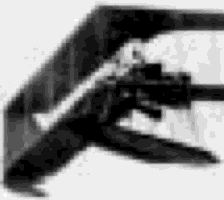

1914-Continued
sailed for Mexican waters to assist in military opera-
tions at Veracruz, Mexico.
22 April
The Bureau of Navigation approved formal
courses of instruction for student aviators and student
mechanics at the Flying School at Pensacola, Fla.
25 April
On the first flight by the
Mississippi
(BB 23)
aviation unit at Veracruz, Mexico, Lieutenant (jg)
Patrick N. 1. Bellinger piloted the AB-3 flying boat to
observe the city and make a preliminary search for
mines in the harbor.
28 April
Lieutenant Ug) Patrick N. 1. Bellinger and
Ensign Walter D. LaMont made a flight in the AB-3 fly-
ing boat to photograph the harbor at Veracruz, Mexico.
2 May
The AH-3 hydro aeroplane, piloted by
Lieutenant Ug) Patrick N. 1. Bellinger with Ensign W.
D. LaMont as observer, flew the first mission in direct
support of ground troops as Marines encamped near
Tejar, Mexico, reported being under attack and
requested the aviation unit at Veracruz, Mexico, to
locate the attackers.
6 May
The Curtiss AH-3 hydro aeroplane, piloted by
Lieutenant Ug) Patrick N. 1. Bellinger with Lieutenant
Ug) Richard C. Saufley as observer, was hit by rifle fire
while on a reconnaissance flight over enemy positions
The AH-7, Burgess-Dunne, flying over Pensacola 1061479
UNITED STATES NAVAL AVIATION
1910-1995
15
in the vicinity of Veracruz, Mexico-the first marks of
combat on a Navy plane.
19 May
As the need for scouting services dimin-
ished at Veracruz, Mexico, the aviation detachment
resumed routine flight instruction while awaiting
orders to return to Pensacola, Fla.
24 May
The aeronautic detachment on board
Birmingham
(CL 2) arrived at Veracruz, Mexico, from
Tampico to join the
Mississippi
(BB 23) detachment in
the school routine of flight instruction.
26 May
On the basis of flight tests, Lieutenant
Holden C. Richardson, CC, USN, recommended that
the Navy buy two swept-wing Burgess-Dunne
hydroaeroplanes "so that the advantages and limita-
tions can be thoroughly determined. . . as it appears to
be only the beginning of an important development in
aeronautical design." The aircraft which were subse-
quently obtained were designated AH-7 and AH-1O.
1 July
Aviation was formally recognized with the
establishment of an Office of Naval Aeronautics in the
Division of Operations under the Secretary of the Navy.
28 July
Lieutenant Ug) Victor D. Herbster reported
on bombing tests which he and Lieutenant Bernard 1.
Smith, USMC, carried out at Indian Head Proving
Grounds, Stumpneck, Md. Both dummy and live
bombs were dropped over the side of the machine
from about 1,000 feet against land and water targets.
Herbster reported his bombing would have been more
accurate "if I had been able to disengage my fingers
from the wind-wheel sooner."
21 August
Lieutenant Commander Henry C. Mustin,
Lieutenant Patrick N. 1. Bellinger and 1st Lieutenant
Bernard 1. Smith, USMC, arrived in Paris, France, from
North Carolina
(ACR 12) for a two-day tour of aircraft
factories and aerodromes in the immediate area. This
temporary assignment, the first use of Naval Aviators
as observers in foreign lands, was a precedent for the
assignment of aviation assistants to naval attaches,
which began the same month when Lieutenant John
H. Towers was sent to London. In September
Lieutenant Ug) Victor D. Herbster and 1st Lieutenant
Bernard 1. Smith reported to Berlin, Germany, and
Paris, respectively.
16 November
An administrative reorganization at
Pensacola, Fla., shifted overall command from the sta-
tion ship to headquarters ashore and the station was
officially designated Naval Aeronautic Station,
Pensacola.
 |
15 |
 |